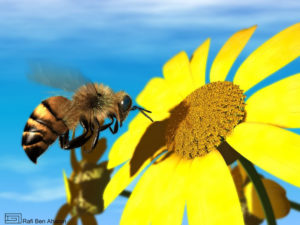 If you believe the headlines, honeybees may soon be endangered, pesticides are to blame, and regulations offer an easy solution. Allegedly, the problem stems largely from our naïve trust in agro-technologies, particularly pesticides. Specifically, Greenpeace and myriad others blame a class of pesticides called neonicotinoids, claiming that these chemicals “might just be the prime culprit in the honeybee plague known as Colony Collapse Disorder (CCD).”
If you believe the headlines, honeybees may soon be endangered, pesticides are to blame, and regulations offer an easy solution. Allegedly, the problem stems largely from our naïve trust in agro-technologies, particularly pesticides. Specifically, Greenpeace and myriad others blame a class of pesticides called neonicotinoids, claiming that these chemicals “might just be the prime culprit in the honeybee plague known as Colony Collapse Disorder (CCD).”
Beekeepers do face some significant challenges concerning the health of commercially farmed honeybee hives. The causes of, and solutions to, these challenges are far more multifaceted and complex than headlines suggest. We need to short fact from fiction and promote a more balanced understanding that will facilitate rational public policies. Accordingly, you can follow the links below to examine the most common misperceptions and faulty claims related to honeybee health. You may also download the full study from which these links are drawn at CEI.org.
| CLAIM: | Colony Collapse Disorder is the biggest threat to honeybees. |
| REALITY: | CCD is a relatively small threat to honeybees compared to other well-known challenges. |
| CLAIM: | CCD is a new threat, which indicates it is linked to modern technologies such as pesticides. |
| REALITY: | There are reported cases of similar disappearances of colonies going back decades even before we employed modern pesticides. |
| |
|
| CLAIM: | Mankind’s tampering with nature threatens the survival of the honeybee and the “balance of nature.” |
| REALITY: | Honeybees in the United States are not natural; they are a non-native farmed species imported to provide honey production and pollination services. |
| |
|
| CLAIM: | Honeybee populations are declining and creating a crisis situation for farmers who need their pollination services. |
| REALITY: | Globally, the number of hives have increased although their locations have shifted. |
| |
|
| CLAIM: | Regional losses of honeybees in Europe and the United States continue unabated. |
| REALITY: | Surveys in 2014 showed improved survival rates, which may indicate that better hive management is reducing losses. |
| |
|
| CLAIM: | Honeybee losses are largely an environmental issue that threatens our food supply. |
| REALITY: | Honeybee losses are largely a manageable economic issue and the farming industry is not about to collapse. |
| |
|
| CLAIM: | Outbreaks of CCD since the introduction of neonicotinoids indicate that these pesticides are a key cause of CCD. |
| REALITY: | There is no correlation between neonicotinoids and hive losses related to CCD or other causes. |
| |
|
| CLAIM: | Studies demonstrate that “sublethal” levels of neonicotinoid pesticides impact hive health. |
| REALITY: | Studies of honeybee exposures to chemicals in real-life settings have not found any such effects, and studies that find effects at unrealistically high exposure levels are not particularly relevant. |
| |
|
| CLAIM: | Neonicotinoids present the most significant pesticide exposure to honeybees. |
| REALITY: | Bees are exposed to much higher levels of other pesticides, including those that beekeepers use inside the hive to control mites and other disease-carrying vectors. |
| |
|
| CLAIM: | Banning neonicotinoids and using other products to be on the “safe side” will help honeybees. |
| REALITY: | Bans will promote the use of alternative chemicals that may prove more dangerous than neonicotinoids. |
| |
|
| CLAIM: | We need regulations to address honeybee survival challenges. |
| REALITY: | Technological development, improved hive management, and private collaboration offer the best solutions. |
| |







